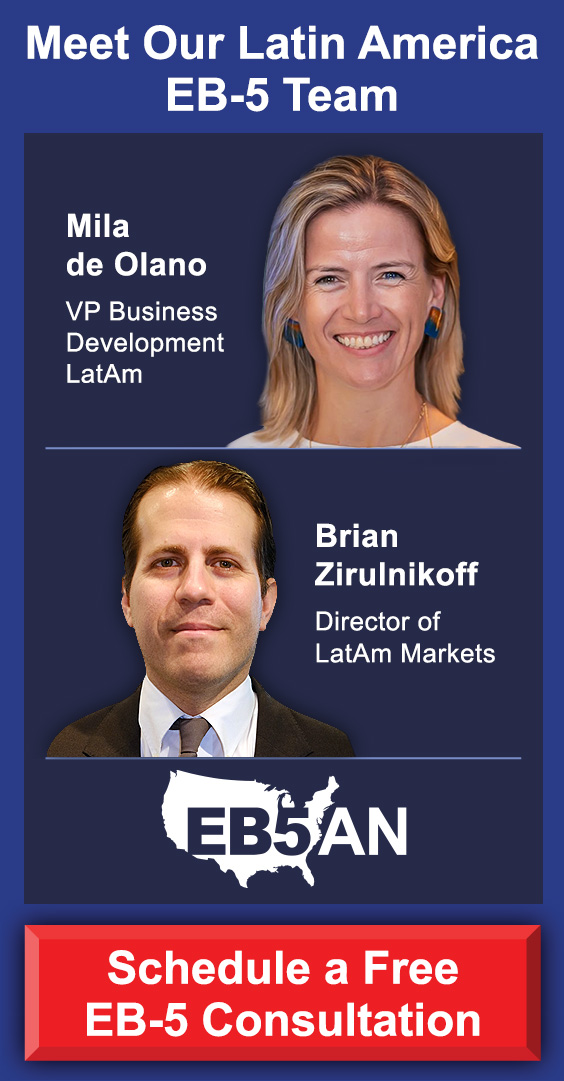For foreign investors seeking permanent residency in the United States, the EB-5 Immigrant Investor Program offers a compelling path.
The EB-5 program allows individuals to obtain Green Cards for themselves and their immediate family by investing in a U.S. new commercial enterprise that creates jobs for U.S. workers.
While the broad contours of the EB-5 program are widely understood, one of its most critical components—the job-creating entity (JCE)—often remains overlooked.
The JCE is the business entity that directly generates the employment necessary to meet the program’s core job creation component. As such, it plays a foundational role in the EB-5 process, bridging the investor’s capital with the economic activity that fulfills the program’s immigration criteria.
In this article, we cover the function and significance of the JCE so that prospective investors can make an informed, secure investment.
The Role of the JCE in the EB-5 Structure
From Investment to Job Creation
Due Diligence and Risk Considerations
The Investor’s Stake in the JCE’s Performance
Transparency and Accountability
The Foundation of EB-5 Success
The Role of the JCE in the EB-5 Structure
To fully grasp the importance of the JCE, it helps to view this entity within the context of the larger EB-5 investment structure.
In a typical EB-5 project, especially those involving a regional center, an investor contributes funds to what is known as the new commercial enterprise (NCE). The NCE functions as a fund or intermediary vehicle that pools capital from multiple EB-5 investors. It is through this NCE that the investor formally becomes a stakeholder in the project.
The NCE, in turn, deploys the funds, often through a loan or equity investment, into the JCE.
According to the United States Citizenship and Immigration Services (USCIS), a JCE is “an entity that receives EB-5 capital from a separate [regional-center]-affiliated NCE and that is responsible for creating indirect jobs for the related EB-5 investors.”
Put simply, the JCE is the operating business responsible for utilizing the capital to carry out a specific project or business activity.
It is this entity that ultimately creates the new full-time jobs that EB-5 investors need to secure their permanent resident status. These jobs may arise through construction, operations, manufacturing, or other qualifying business activities.
Because USCIS measures an investor’s compliance based on job creation, the JCE is, in many ways, the centerpiece of the entire endeavor. Its success or failure in implementing the business plan and generating employment has perhaps the greatest single impact on the immigration outcome of each investor.
From Investment to Job Creation
The JCE is responsible for deploying investor funds in ways that satisfy EB-5 program requirements, most notably the creation of at least 10 full-time U.S. jobs per investor.
Depending on the nature of the project and the structure of the investment, these jobs may be direct, meaning actual employees on the JCE’s payroll, or indirect, calculated using USCIS-approved economic modeling when the project is affiliated with a regional center. If the investment is direct instead of through a regional center, then only direct jobs qualify for immigration purposes, and no indirect jobs are counted toward the 10 full-time jobs requirement.
Ultimately, the JCE is the entity executing the project: building the hotel, expanding the factory, opening the healthcare facility, etc. Its expenditures, hiring practices, and adherence to the business plan are what generate the employment data USCIS will ultimately evaluate during the I-829 petition stage, the final step in removing the conditions on an investor’s Green Card.
Due Diligence and Risk Considerations
Given the centrality of the JCE to an EB-5 investor’s success, it is critical that prospective participants conduct thorough due diligence on the entity.
While much attention is often placed on the regional center or NCE, especially in terms of marketing and investment terms, the operational integrity and viability of the JCE may also have a direct impact on investor outcomes.
Key considerations include the JCE’s leadership and management team, their track record in similar projects, the credibility of the underlying business plan, and the project’s current stage of development. An entity with a proven history of successful project execution and job creation offers a far more secure path than one led by less experienced operators or dependent on speculative business models.
It’s also vital to examine the JCE’s financial footing and its alignment with the broader economic and EB-5 landscape. Is the project located in a targeted employment area (TEA), qualifying for the reduced $800,000 minimum investment, set-aside visas, and priority processing (if a rural project)? Has the JCE secured the necessary permits, zoning approvals, or non-EB-5 funding? How does the JCE plan to use invested capital—for land acquisition, construction, operations, or refinancing? Is the project already under construction or partially completed, meaning that it should carry less execution risk and have lower chances of being delayed?
The answers to these questions help gauge the likelihood that the JCE can fulfill its obligations, not just in terms of job creation but also in preserving and potentially returning investors’ capital.
The Investor’s Stake in the JCE’s Performance
Investors’ relationship with the JCE may be indirect, especially in projects where the NCE serves as a lending vehicle. However, this distance does not diminish the investor’s stake in the JCE’s performance. A successful JCE enhances the probability of both immigration success and financial return.
To qualify under the EB-5 program, investors must ensure they meet two primary criteria: their capital remains at risk for the duration of the investment and their investment results in the creation of at least 10 full-time positions for U.S. workers, with each job lasting a minimum of two years. Even if a JCE becomes insolvent after these conditions have been met, the investor may still be eligible to file a successful I-829 petition to remove the conditions on their Green Card.
On the other hand, if the JCE declares bankruptcy before the investor’s Form I-526E is approved, the situation becomes more complicated. In such cases, the best course of action is typically for the associated applicant to withdraw their existing petition and submit a new one tied to a different, viable project.
Since Form I-526E is used to demonstrate the investor’s compliance with EB-5 requirements and their intentions to continue to do so moving forward, an early-stage project collapse often means the investment can no longer satisfy the necessary criteria, particularly those around job creation and the “at-risk” requirement.
In such instances, starting over is often an investor’s only option, which is why it’s so crucial to partner with a trustworthy and reputable JCE.
Transparency and Accountability
Ideally, the JCE should operate with a high degree of transparency and consistently report on progress, expenditures, and hiring.
Though there are no universally enforced standards for disclosure, many reputable EB-5 projects provide regular updates or third-party monitoring. When possible, investors should seek projects that allow for independent auditing or oversight, which can provide further assurance of compliance and good-faith execution by the JCE.
Additionally, some projects implement job creation buffers, creating and maintaining more than the minimum number of jobs needed. In addition to safeguards like job creation and project completion guaranties, these buffers protect investors in the event of cost overruns, delays, or underperformance in employment generation, ensuring that even if projections fall short, there is still a sufficient margin to meet USCIS requirements.
The Foundation of EB-5 Success
In the complex ecosystem of EB-5 investing, the JCE is the foundation upon which an investor’s entire immigration and financial structure rests. It is not just a vehicle for growth; it is also the direct agent of action that fulfills the core promise of the EB-5 program: creating jobs for U.S. workers in exchange for Green Cards.
For prospective EB-5 investors, understanding the JCE is essential. By looking beyond the surface and examining the operational capacity, credibility, and execution strategy of the JCE, investors can significantly enhance their chances of achieving both their immigration and investment goals.
At EB5AN, transparency is of the utmost importance to us. That is why more than 2,700 families from 70+ countries have turned to EB5AN for help in becoming lawful permanent residents of the United States. Our team has more than a decade of experience, and we offer our clients first-rate, low-risk EB-5 regional center projects with a 100% USCIS project approval rate.
If you would like to know more about your EB-5 investment options, book a free call with our expert team today.










